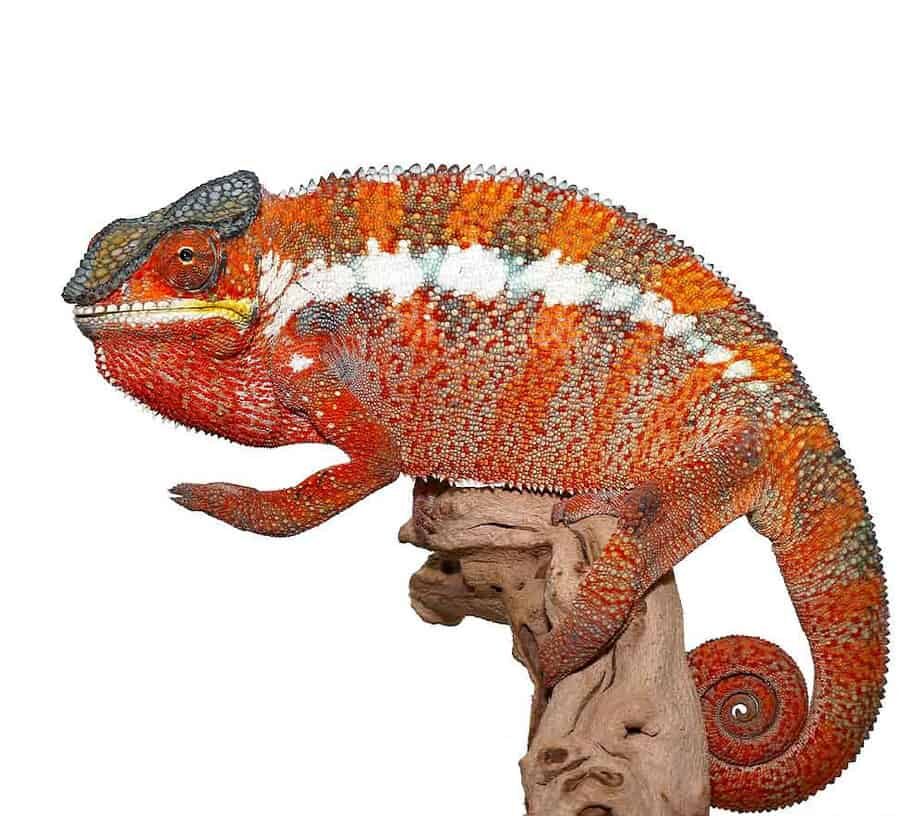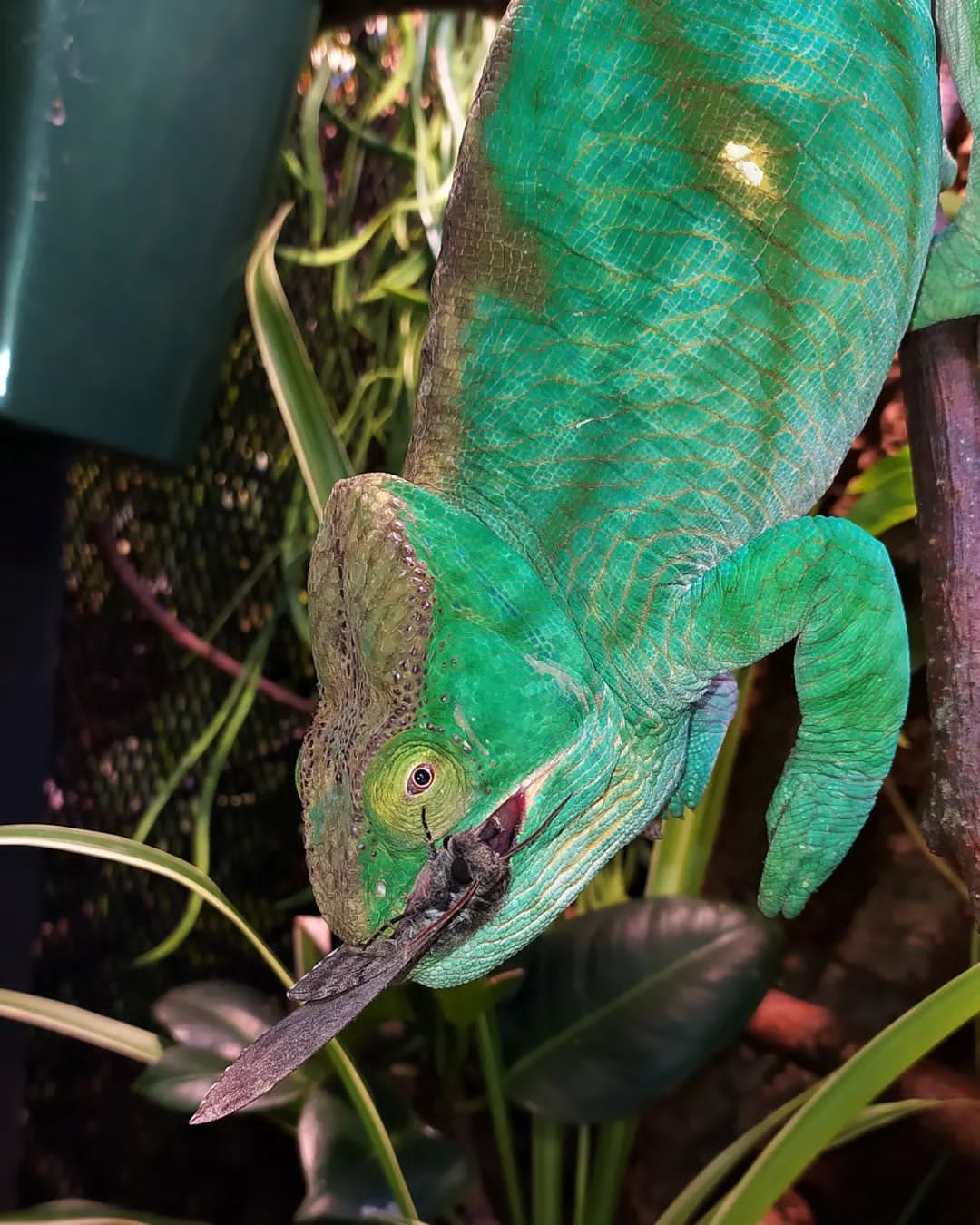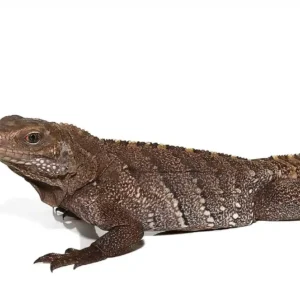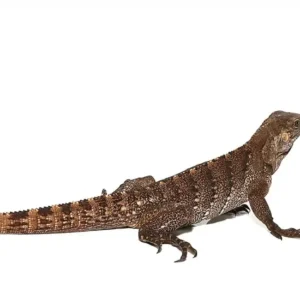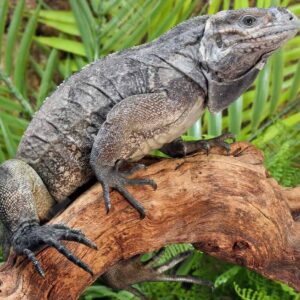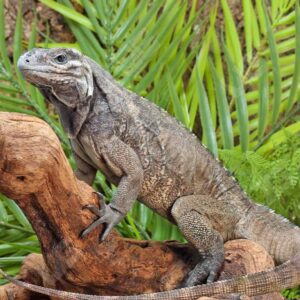Parsons Chameleon For Sale
$850.00
Parsons Chameleon (Calumma parsonii) is a huge species of chameleon that belongs to the family of Chamaeleonidae. It is native to small areas in dry primal forest in northern and eastern Madagascar. It is included in the CITES Appendix II, which means that trade with the species is controlled. While the majority of species of chameleons from Madagascar are not legally exportable However, a few Parson’s chameleons are legally exported every year from the country of its origin.
Description
The Parsons Chameleon, scientifically known as Calumma parsonii, stands out as one of the most remarkable chameleon species globally. Native to the lush, verdant forests of Madagascar, this chameleon is celebrated not only for its impressive size but also for its vibrant and diverse coloration. Reaching lengths of up to 68 centimeters, it ranks among the largest chameleons, making it a captivating subject for herpetologists and reptile enthusiasts alike.
Parsons Chameleons inhabit the humid, tropical forests of Madagascar, where they thrive in the dense foliage and enjoy a steady supply of insects and small invertebrates. These chameleons are predominantly arboreal, spending most of their lives in trees, utilizing their prehensile tails and zygodactylous feet to navigate the complex canopy environment.
One of the Parsons Chameleon’s most distinct characteristics is its ability to change color. This color change is not just for camouflage but also plays a crucial role in communication, temperature regulation, and signaling emotional states. Males and females can display a variety of hues, from vibrant greens and blues to more subdued browns and grays, depending on their mood, health, and environmental conditions.
In the reptile world, the Parsons Chameleon holds significant importance due to its unique adaptations and behaviors. Its large size and striking appearance make it a subject of fascination, while its ecological role as both predator and prey contributes to the delicate balance of its native ecosystem. Despite its relatively slow movement, the Parson’s Chameleon is an adept hunter, using its long, sticky tongue to capture prey with remarkable precision.
As we delve deeper into the fascinating world of the Parsons Chameleon, we will explore its habitat, behavior, diet, and the conservation efforts in place to ensure the survival of this extraordinary species. Join us on this journey to uncover the wonders of one of Madagascar’s most iconic reptiles.
Physical Characteristics
The Parsons Chameleon, scientifically known as Calumma parsonii, is renowned for its impressive size and distinctive physical attributes. Among the largest chameleons in the world, this species can reach up to 68 centimeters in length, with males typically being larger than females. Their robust body structure is complemented by a broad head adorned with a prominent casque, a bony projection that gives the chameleon its unique profile.
Coloration in Parsons Chameleon is vivid and varied, ranging from vibrant greens and yellows to more subdued blues and browns. This color diversity is not merely aesthetic but serves multiple functions, including communication, camouflage, and temperature regulation. Males often exhibit brighter and more varied colors compared to females, who tend to have more uniform and less conspicuous hues. Additionally, the skin texture of Parson’s Chameleon is granular and rugged, providing an added layer of camouflage against their natural habitat in the dense forests of Madagascar.
One of the most fascinating aspects of the Parsons Chameleon is its ability to change colors. This remarkable trait is primarily influenced by environmental factors such as light, temperature, and humidity, as well as the chameleon’s emotional state. For instance, a chameleon may adopt darker shades when basking in sunlight to absorb more heat, or display brighter colors when courting a mate or defending its territory. These color changes are facilitated by specialized cells in the chameleon’s skin called chromatophores, which expand and contract to alter the pigmentation and reflect different wavelengths of light.
Gender differences are also evident in the Parsons Chameleon, with males possessing larger casques and more pronounced coloration than females. These sexual dimorphisms play a crucial role in mating rituals and territorial displays. Understanding the physical characteristics of the Parson’s Chameleon not only underscores the species’ adaptability and survival strategies but also highlights the intricate beauty of these remarkable reptiles.
Habitat and Distribution
The Parsons Chameleon, scientifically known as Calumma parsonii, is predominantly found in the lush rainforests of Madagascar. This species thrives in the island’s diverse and dense forests, which provide the ideal environment for its survival. The rainforests of Madagascar are known for their high humidity levels, a critical factor for the chameleon’s well-being. Typically, the Parsons Chameleon prefers areas where the humidity ranges from 70% to 90%, which helps maintain their skin moisture and physiological processes.
Temperature is another vital aspect of the Parsons Chameleon habitat. These chameleons are most comfortable in temperatures ranging between 70°F to 85°F (21°C to 29°C) during the day, with a slight drop in temperature at night. The moderate tropical climate of Madagascar’s rainforests provides an optimal temperature range, ensuring the chameleons can regulate their body heat efficiently.
Vegetation plays a crucial role in the Parsons Chameleon habitat. These chameleons are arboreal, spending most of their time in the trees. They are often found in regions with dense foliage, which offers ample opportunities for camouflage and hunting. The rainforests of Madagascar are abundant with a variety of trees and plants, providing the perfect cover and food sources for the Parson’s Chameleon. The rich biodiversity of these forests supports an array of insects and other small creatures, which constitute the primary diet of the Parson’s Chameleon.
Within Madagascar, the Parsons Chameleon is commonly found in the eastern rainforests, including areas like the Andasibe-Mantadia National Park and the Masoala Peninsula. These regions are renowned for their pristine environments and are protected areas, which help conserve the natural habitat of this remarkable species. The specific conditions of these forests, with their unique microclimates and vegetation, make them ideal for the thriving populations of the Parson’s Chameleon.
Diet and Hunting Behavior
The Parsons Chameleon is an expert hunter, primarily subsisting on a diet of insects and small invertebrates. This fascinating reptile is known for its adept hunting techniques, allowing it to thrive in its natural habitat. The Parsons Chameleon diet includes a variety of insects such as crickets, grasshoppers, and beetles, as well as other small invertebrates like spiders and caterpillars. In some cases, it may also consume smaller lizards and even small birds, showcasing its versatility as a predator.
One of the most remarkable aspects of the Parsons Chameleon hunting behavior is its use of a long, sticky tongue to capture prey. This tongue can extend up to twice the length of the chameleon’s body, allowing it to snatch prey from a considerable distance. The tongue is propelled by a rapid, ballistic mechanism, and the sticky tip ensures that the prey is securely grasped and swiftly retracted back into the mouth. This efficient hunting technique not only conserves energy but also minimizes the risk of injury from potential predators.
In addition to its extraordinary tongue, the Parson’s Chameleon exhibits unique feeding behaviors. It remains motionless for extended periods, blending seamlessly into its surroundings to avoid detection by both prey and predators. Once prey is within range, the chameleon strikes with lightning speed, demonstrating remarkable accuracy and precision. Furthermore, it has been observed that the Parson’s Chameleon shows a preference for certain types of prey, often selecting insects that provide the most nutritional value and energy.
Overall, the diet and hunting behavior of the Parson’s Chameleon highlight its adaptability and specialized feeding strategies. These behaviors ensure that the chameleon remains a successful predator in its environment, maintaining a balanced diet and contributing to the ecological equilibrium of its habitat.
Reproduction and Lifespan
The breeding habits of the Parson’s Chameleon are particularly intriguing, characterized by unique mating rituals. During the mating season, male Parson’s Chameleons exhibit vibrant color displays and physical posturing to attract females and assert dominance over rivals. Once a female is receptive, the mating process ensues, typically lasting several hours.
Following successful mating, the gestation period for a female Parson’s Chameleon ranges from 6 to 9 months. The female then lays a clutch of eggs, usually numbering between 20 and 50, in a carefully excavated burrow in the ground. This nesting behavior ensures that the eggs are well-protected from predators and environmental extremes.
The incubation period for Parson’s Chameleon eggs is notably lengthy, lasting anywhere from 12 to 24 months, depending on environmental conditions such as temperature and humidity. Throughout this period, the eggs remain buried, developing slowly until they are ready to hatch. Upon hatching, the young chameleons are fully independent and receive no parental care.
In their early life stages, juvenile Parson’s Chameleons are highly vulnerable to predation and environmental challenges. They rely on their innate camouflage and agility to evade predators. As they grow, their coloration becomes more pronounced, aiding in both predator avoidance and communication.
Regarding lifespan, Parson’s Chameleons exhibit significant differences between wild and captive environments. In the wild, their lifespan typically ranges from 5 to 7 years, influenced by factors such as predation, habitat conditions, and food availability. In captivity, where these factors are controlled, Parson’s Chameleons can live considerably longer, often reaching 10 to 12 years, and in some cases, even surpassing this range with optimal care.
Understanding the reproductive cycle and lifespan of the Parson’s Chameleon is crucial for conservation efforts and for those interested in keeping these fascinating reptiles as pets. The information highlights the importance of providing suitable environmental conditions to support their breeding and longevity.
The conservation status of the Parson’s Chameleon is a matter of growing concern among herpetologists and conservationists. Currently, this species is listed as Near Threatened on the International Union for Conservation of Nature (IUCN) Red List. The primary threats to the Parson’s Chameleon population stem from habitat destruction and the illegal pet trade. Deforestation in Madagascar, their native habitat, poses a significant risk as it leads to the fragmentation and degradation of their natural environment. This, in turn, affects their ability to find food, shelter, and mates, ultimately leading to a decline in their population.
Another pressing issue is the illegal pet trade. Despite regulations, Parson’s Chameleons are often captured and sold in the international pet market. This not only reduces their numbers in the wild but also puts additional pressure on the remaining populations, making it harder for them to recover. The high demand for these unique reptiles, driven by their striking appearance and fascinating behaviors, exacerbates the problem.
Efforts to conserve the Parsons Chameleon are underway, with various organizations and programs dedicated to protecting this species. Conservation initiatives in Madagascar focus on habitat preservation, reforestation, and the establishment of protected areas. These efforts aim to maintain and restore the natural habitats crucial for the survival of the Parsons Chameleon. Additionally, there are awareness campaigns and legal measures to curb the illegal pet trade and promote responsible pet ownership.
Collaboration between local communities, governments, and international conservation organizations is essential to ensure the long-term survival of the Parsons Chameleon. By addressing the key threats and implementing effective conservation strategies, there is hope for stabilizing and eventually increasing their population. The ongoing research and monitoring of this species also provide valuable insights that aid in refining conservation efforts and ensuring their effectiveness.
Role in Ecosystem
The Parsons Chameleon plays a pivotal role in maintaining the ecological balance within its natural habitat. As an insectivore, this chameleon significantly contributes to the control of insect populations. By preying on a variety of insects, including crickets, locusts, and beetles, the Parsons Chameleon helps to keep these populations in check, preventing potential outbreaks that could otherwise damage vegetation and disrupt the ecosystem.
Moreover, Parsons Chameleon exhibit a unique feeding behavior that aids in the dispersion of seeds. While insects constitute the majority of their diet, these chameleons occasionally consume fruits and vegetation. During this process, they inadvertently assist in the dispersal of seeds, contributing to plant diversity and growth within their environment.
Symbiotic relationships are also a noteworthy aspect of the Parsons Chameleon role in its ecosystem. The chameleon shares its habitat with various other species, including birds and mammals, which can benefit from the chameleon’s predation on insects. For example, by reducing the number of harmful insects, the chameleon indirectly supports the survival and health of plant species that other animals rely on for food and shelter. This interconnected web of relationships highlights the Parsons Chameleon integral role in sustaining the delicate balance of its ecosystem.
Additionally, the chameleon’s presence influences the behavior and distribution of other species within its habitat. Predators of the Parsons Chameleon, such as birds of prey, are drawn to areas where these chameleons are abundant, affecting the local food web dynamics. Conversely, the chameleon’s camouflage abilities and territorial behavior can impact the spatial distribution of both prey and competing chameleons, further shaping the ecological landscape.
In essence, the Parsons Chameleon is not merely a passive inhabitant of its environment but an active participant in maintaining ecological equilibrium. Its contributions to insect population control, seed dispersion, and symbiotic relationships underscore the chameleon’s importance in fostering a balanced and thriving ecosystem.
Keeping Parsons Chameleons as Pets
Keeping Parsons Chameleon as pets can be a highly rewarding experience for dedicated reptile enthusiasts. These unique and vibrant creatures, known for their striking coloration and impressive size, require specific care to thrive in captivity. Understanding and meeting their needs is crucial for ensuring their health and well-being.
The first consideration for potential Parsons Chameleon owners is the habitat setup. A spacious and well-ventilated enclosure is essential. Parsons Chameleon need ample vertical space to climb, so a tall terrarium is preferable. Inside the enclosure, provide plenty of foliage and branches to mimic their natural environment and offer hiding spots. Consistent temperature and humidity levels are vital; maintain a daytime temperature between 75-85°F and a nighttime drop to around 65-70°F. Humidity should be kept at 60-80%, which can be achieved through regular misting and the use of a humidifier.
Diet is another critical aspect of caring for Parsons Chameleon. They are primarily insectivores, meaning their diet should consist mainly of live insects such as crickets, roaches, and hornworms. Supplement their diet with occasional offerings of fruits and leafy greens to ensure they receive a balanced intake of nutrients. It is also essential to dust their food with calcium and vitamin supplements to prevent nutritional deficiencies and support bone health.
Health care for Parsons Chameleon involves regular monitoring and prompt attention to any signs of illness. Common health issues include respiratory infections, dehydration, and metabolic bone disease. Regular veterinary check-ups with a reptile specialist can help detect and address potential problems early. Additionally, maintaining proper husbandry practices, such as keeping the enclosure clean and providing a stress-free environment, can go a long way in preventing health issues.
Owning a Parsons Chameleon is a significant commitment. These reptiles can live for over a decade with proper care, requiring ongoing attention and resources. Potential owners should be prepared for the challenges and responsibilities that come with keeping such a unique pet. By providing a suitable habitat, a balanced diet, and attentive health care, you can ensure that your Parsons Chameleon thrives in captivity.

